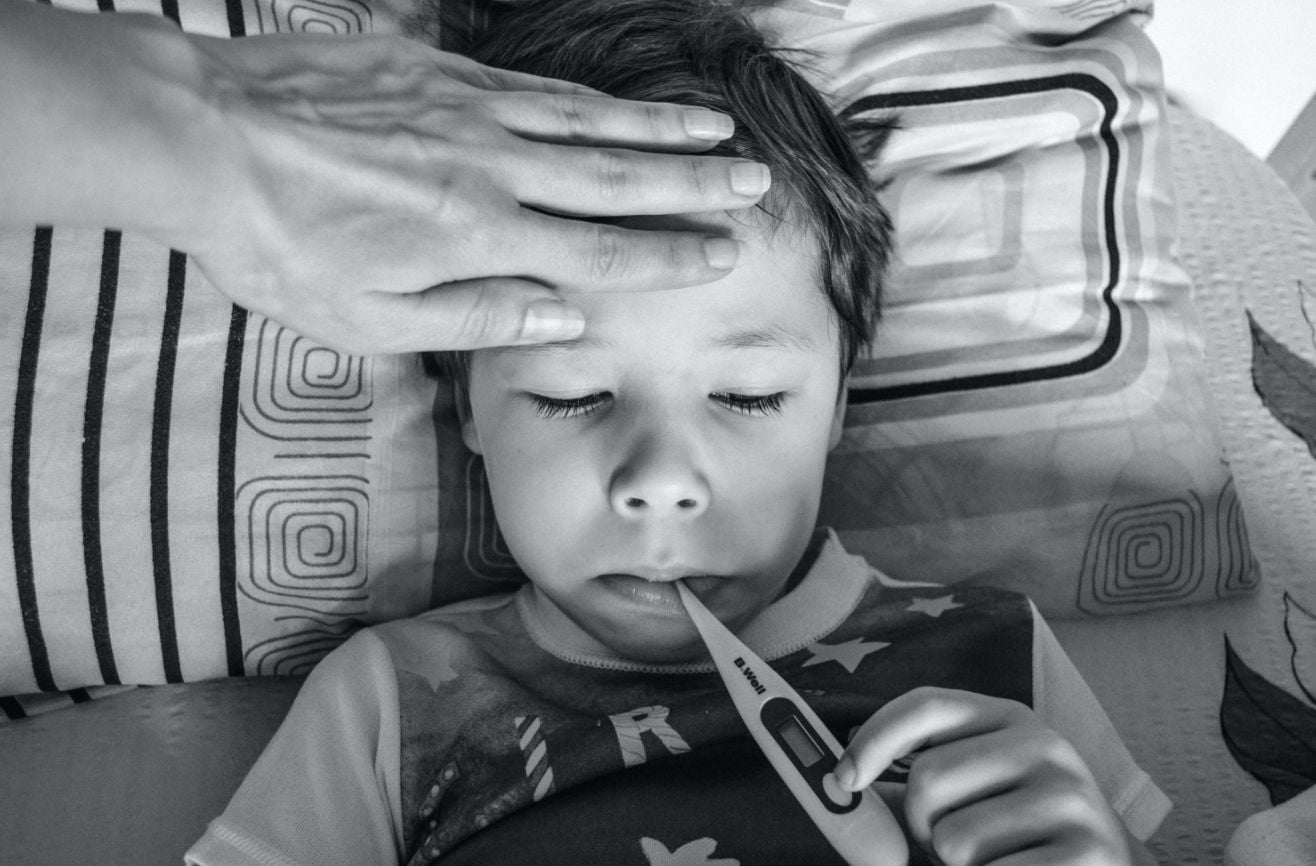Child headache affects up to 70% of children below 15 years but overall, headaches and migraines affect up to 49% of the global population.
While it is true 95% of us have experienced some form of head pain, women tend to suffer from headaches the most.
Children and adolescents usually suffer from ‘hatband headaches’ such as tension, hunger, congestion, cluster, and medication overuse headaches, which may or may not affect their daily activities.
Hatband headaches are characterized by tightness and pain in the forehead, back/side of the head, or all around the head.
Children also get migraines. Child migraines are characterized by intense pain, and recurring throbbing inside the head. The pain could happen in one part of the head or all of it.
Migraines are usually accompanied by vomiting, nausea, and sensitivity to light and sound. Persistent migraines can interfere with the child’s ability to go to school and achieve timely development milestones.
Pediatric and neurological attention is required when child headache manifest in the following ways:
- a headache that never goes away
- a headache that is sudden and sharp
- a headache that follows a bad head injury, coughing, exertion, sudden movement, etc
- a headache accompanied by other illnesses such as fever, numbness, stiff neck, seizures, double vision, speech troubles, etc
Correct medication in addition to self-help remedies and a healthy lifestyle at home can help reduce the pain in migraines and completely stop mild headaches.
Parents are also advised to keep a diary of headaches, whose data is useful when visiting a pediatrician or a neurologist.
Here are the common causes of child headache today

1. Your child drinks less water
Water is perhaps one subject that is rarely discussed when it comes to child health and development. Yet, drinking water is a critical habit that fends off many illnesses in children.
Kids are not keen on taking water and some actually dislike it! Often times they distaste water in preference for cola and other sweetened drinks.
Water has also taken the back seat because of the indoor lifestyle adopted by the 21st-century indoor generation. When children play less, they have less urge to drink water.
On the other hand, children who play outdoors tend to drink plenty of water to replenish what they have lost through heavy sweating, urination, and sometimes vomiting and diarrhea.
Lack of water in the body is the known lead cause of dehydrated headaches. When the body runs short of water, the soft tissues in the brain begin to tighten and shrink away from the skull, which triggers pain in the meninges, the membrane that surrounds the brain.
Other signs your child is lacking water include dry mouth, dry skin, fatigue, bad breath, a craving for salt, vomiting, less urination, nausea, dark yellow urine, and abdominal pain. A combination of these and other symptoms should send signals that your child needs water urgently.
2. Too much screen time
The more hours children spend bingeing on smartphone screens translates to more strain to the eyes, neck, back, spine, and the head. They also expose their bodies to short and long term side effects beyond only temporary headaches and body pains.
About half of school-going children around the globe spend more than the recommended 2 hours bingeing on screens. Others actually spend more than 5 hours on the computer or smartphones.
These devices, including the smartphone, emit short-wavelength blue and violet light that can affect the eye and the head following extended use.
Besides the exposure to electromagnetic waves, slouching on smartphones and computers puts a lot of strain on the neck, back, and spine in what is known as tech neck. The pain is then transferred through various spine nerve channels to trigger headaches.
A French cross-sectional study about screen-time exposure and reporting of headaches in young adults showed,
High levels of screen time exposure are associated with migraine in young adults.
3. Insufficient sleep
Lack of quality sleep is also known to trigger occasional or even constant headaches such as migraines and tension headaches.
A normal child should sleep sufficiently in order to go through non-rapid eye movement (NREM) and rapid eye movement sleep (REM). These sleep stages are fundamental in fending off illnesses and a sure way to achieve timely development milestones.
When a child sleeps well through the NREM stages of sleep, the blood supply to the muscles is assured, and body growth and repair take place.
The benefits of the NREM and REM stages of sleep include improved memory, mood, and learning, and a lack of, is detrimental to physical and emotional well being, and of course, leads to headaches.
Research by Missouri State University in 2011 suggested that lack of quality sleep is linked to headaches, some of which can be quite painful.
Significantly, two thirds of all chronic pain patients report poor sleep quality and recent data support that sleep disturbance can cause or worsen acute and chronic pain.
To ensure quality and sufficient sleep for children, the following should happen:
The bedroom should be
- quiet
- dark enough
- EMF free
- tech free
4. Irregular mealtimes & skipped meals
When children skip meals, eat selectively, take a long time to eat, or eat food with insufficient nutritional value, they will more than likely develop complications related to nutritional deficits such as headaches.
A headache of this kind happens when the blood sugar in the body dips beyond normal and it is accompanied by symptoms such as dizziness, stomach pain, and fatigue.
When children eat correctly, the calories they have consumed are converted into energy which in turn becomes the fuel to run the body.
In a situation where the stomach is empty for extended periods, the hunger hormone known as Ghrelin is released into the bloodstream to trigger appetite, and therefore hunger signals.
When a child fails to eat as demanded the Ghrelin hormone may
increase your blood pressure and tighten blood vessels in your body, triggering a headache.
5. Child headache due to illness & injury
Often times, the existence of clinical conditions and other illnesses in the body can predispose a child to headaches. Some of the causative illnesses are listed here:
- muscle tension in the limbs
- vision impairment when a child strains to read
- colds and flu
- ear and sinus infections
- teething pain
- abdominal pains
- vomiting
- fever
- etc
Though uncommon, head pains can also happen due to meningitis and encephalitis.
Besides the conditions listed above, headaches can get triggered by injuries to the head. This happens when a child falls hard on the head or the head gets hit hard by an object thrown at it.
Parents should be concerned when the head injury happens instantly following a head trauma, and gets worse in the course of the day.
6. Medication overuse
It is likely that child headache may occur following extended use of medicine to treat headaches and other medical conditions. Medication overuse (MOH) affects up to 2% of the global population, and related pain may occur even during withdrawal.
When a child or teen-ager with headaches takes pain medicine too often, the headaches may become more frequent and more painful.
Here is the scenario: Usually, we give medicine to treat headaches in children but instead of reducing the pain the medication makes matters worse. Still, we are tempted to give them even more pain killers to handle the ‘rebound headache‘.
Pain relievers taken to calm arthritis and other illnesses in older people. It can also worsen headaches in those who previously did not have MOH issues.
7. Social-emotional challenges
Social-emotional challenges are not limited to adults only. Children will experience emotional highs and lows due to bullying and other social-emotional experiences.
When your child is unwilling to go to school on a Monday morning, he is probably experiencing anxiety issues over the possibility of meeting his bully. Most often, your child will complain of stomach pain, headache, and other emotional discomforts.
Besides bullying, other social-emotional problems listed below can trigger headaches:
- anxiety over parent divorce
- stress over the death of a family member or friend
- anxiety over social rejection
- anxiety over change of school
- etc
8. Child headache & genetic predisposition
Genes are passed down from generation to generation and form the foundation upon which how we look, talk, and sadly, the diseases we are predisposed to. Genes play a very crucial role in predisposition to migraines.
Yes, migraine headache has a genetic predisposition. It does often run in families and it is more common in females who are past puberty. Studies have confirmed that the risk of migraine in first-degree relatives is increased 1.5- to 4-fold.
When a family has a history of persistent headaches through generations, chances are very high that the children too will have to stick in and deal with headaches as they grow up.
Self-help remedies to treat child headache at home
The following tips and tricks should help relieve the headache in your child:
- lie them down in a quiet, dark room
- put a cool, moist cloth across their forehead or eyes
- get them to breathe easily and deeply
- encourage them to sleep, as this speeds recovery
- encourage them to eat or drink something (but not drinks containing caffeine)





Leave a Reply